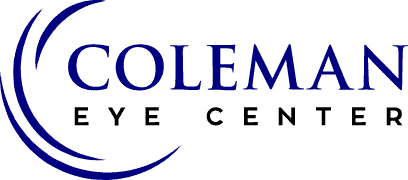Everyone is buzzing about the upcoming solar eclipse. We are excited about this rare astronomical phenomenon as well. However, it is important to know how to safely view the eclipse. Looking directly at the sun without proper eye protection can cause serious and permanent damage to your eyes. We hope this information will help you have a safe and enjoyable experience watching the solar eclipse.
When is the Next Solar Eclipse?
The next total solar eclipse will cross North America on April 8, 2024.
What to Expect During a Solar Eclipse
A solar eclipse happens when the moon blocks the sun from our view. This process unfolds over a couple of hours.
Partial solar eclipse
- First, there is a “partial” eclipse as the moon gradually covers the sun’s bright face.
- In most places, this process will take about 1 hour.
- You must wear special eye protection (sunglasses are NOT enough) to directly observe the sun, during a partial eclipse or any other time.
Full solar eclipse (totality)
- The full eclipse, known as totality, happens when the moon completely covers the sun.
- This only lasts 1 to 2 minutes, but it is an incredible experience. The light of day gives way to a deep twilight sky. The sun’s outer atmosphere (called the solar corona) gradually appears, glowing like a halo around the moon in front of it. Bright stars and planets become more visible in the sky. The outdoor temperature may drop a few degrees.
Partial eclipse
- The eclipse then becomes “partial” again for an hour as the moon moves away.
- Once again, you MUST wear eye protection to look at the sun, during a partial eclipse or any other time.
Watching a solar eclipse is a memorable experience, but you must do it safely to prevent serious eye injury or even blindness.
Staring at the Sun is Dangerous for Your Eyes
Looking at the sun without the right eye protection — for even a short time — can damage your retina permanently. It can even cause blindness, called solar retinopathy.
Keep in mind that ordinary sunglasses, even very dark ones, or homemade filters are not safe for looking at the sun.
There is only one safe way to look directly at the sun, whether during an eclipse or not: through special-purpose solar filters. These solar filters are used in “eclipse glasses” or in hand-held solar viewers. They must meet a very specific worldwide standard known as ISO 12312-2.
For information about where to get the proper eyewear or handheld viewers, check out the American Astronomical Society.
Plan Ahead to Safely Watch the Solar Eclipse:
- Carefully look at your solar filter or eclipse glasses before using them. If you see any scratches or damage, do not use them.
- Always read and follow all directions that come with the solar filter or eclipse glasses. Help children to be sure they use handheld solar viewers and eclipse glasses correctly.
- Never look at the uneclipsed or partially eclipsed sun through an unfiltered camera, telescope, binoculars or other similar devices. This is important even if you are wearing eclipse glasses or holding a solar viewer at the same time. The intense solar rays coming through these devices will damage the protective filter in your solar glasses and put your eyes at risk.

